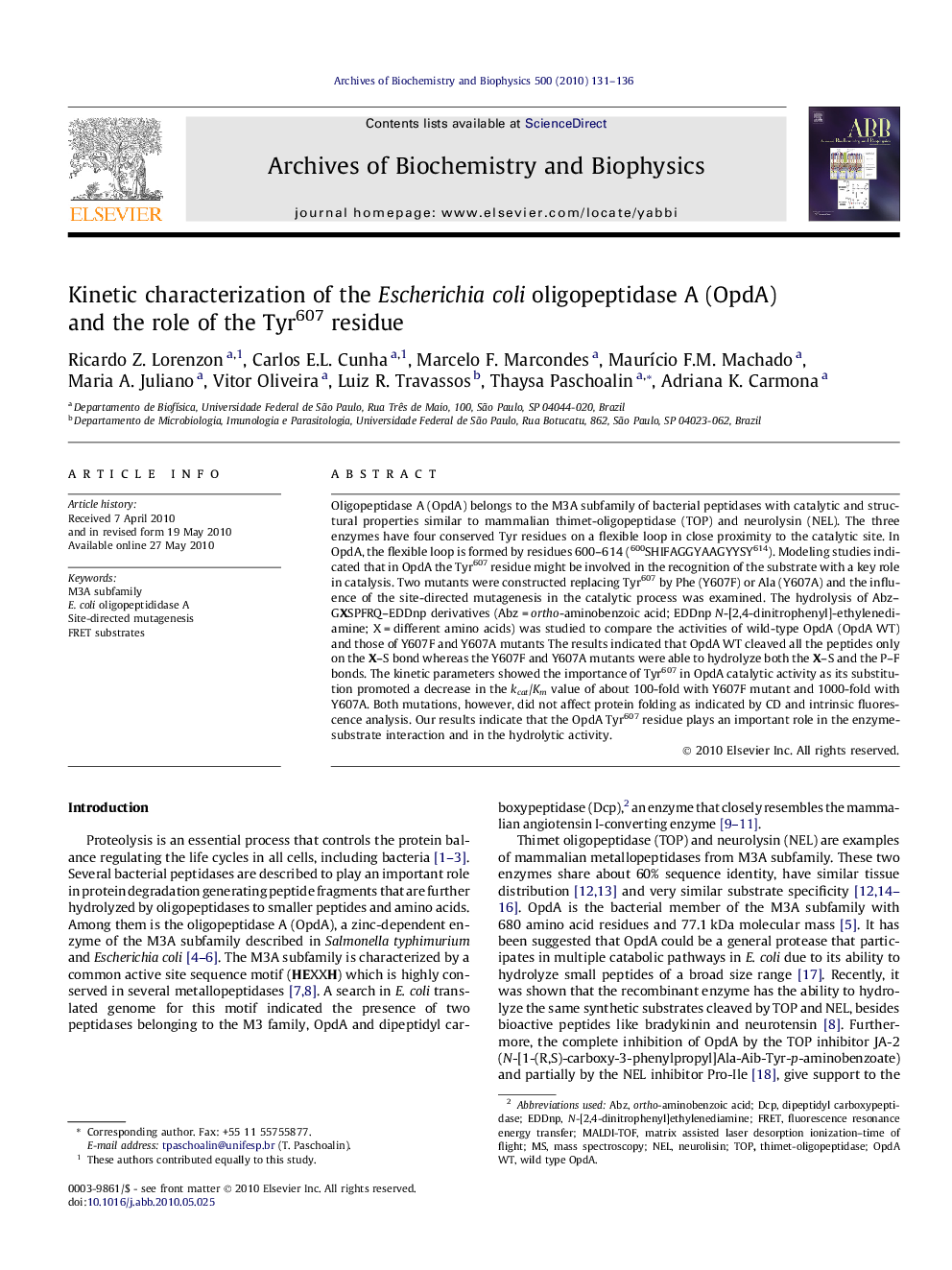| Article ID | Journal | Published Year | Pages | File Type |
|---|---|---|---|---|
| 1926020 | Archives of Biochemistry and Biophysics | 2010 | 6 Pages |
Oligopeptidase A (OpdA) belongs to the M3A subfamily of bacterial peptidases with catalytic and structural properties similar to mammalian thimet-oligopeptidase (TOP) and neurolysin (NEL). The three enzymes have four conserved Tyr residues on a flexible loop in close proximity to the catalytic site. In OpdA, the flexible loop is formed by residues 600–614 (600SHIFAGGYAAGYYSY614). Modeling studies indicated that in OpdA the Tyr607 residue might be involved in the recognition of the substrate with a key role in catalysis. Two mutants were constructed replacing Tyr607 by Phe (Y607F) or Ala (Y607A) and the influence of the site-directed mutagenesis in the catalytic process was examined. The hydrolysis of Abz–GXSPFRQ–EDDnp derivatives (Abz = ortho-aminobenzoic acid; EDDnp N-[2,4-dinitrophenyl]-ethylenediamine; X = different amino acids) was studied to compare the activities of wild-type OpdA (OpdA WT) and those of Y607F and Y607A mutants The results indicated that OpdA WT cleaved all the peptides only on the X–S bond whereas the Y607F and Y607A mutants were able to hydrolyze both the X–S and the P–F bonds. The kinetic parameters showed the importance of Tyr607 in OpdA catalytic activity as its substitution promoted a decrease in the kcat/Km value of about 100-fold with Y607F mutant and 1000-fold with Y607A. Both mutations, however, did not affect protein folding as indicated by CD and intrinsic fluorescence analysis. Our results indicate that the OpdA Tyr607 residue plays an important role in the enzyme-substrate interaction and in the hydrolytic activity.
